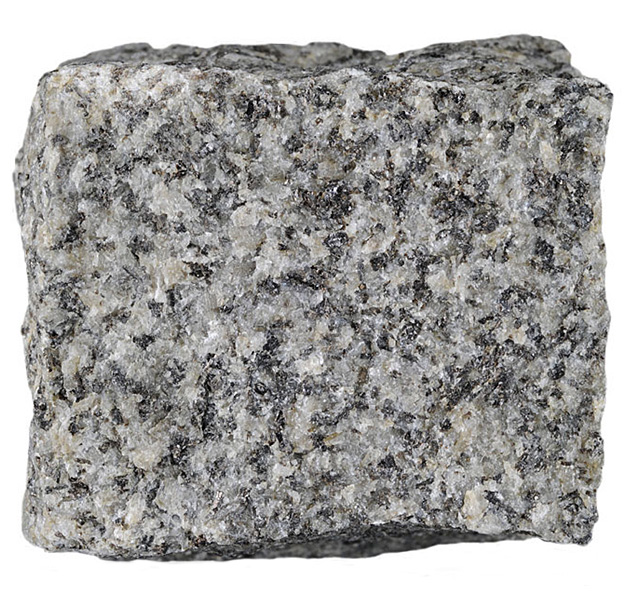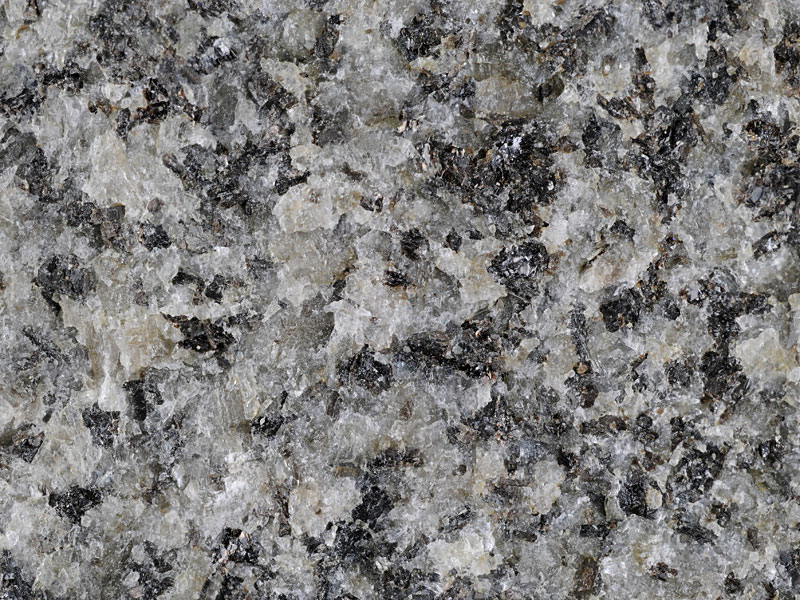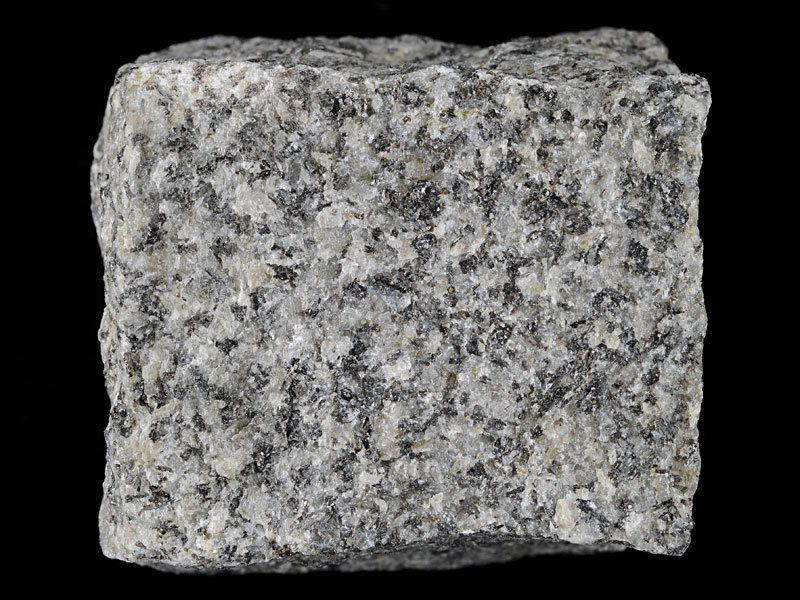
Fact sheet
The diorite at Loch Dee is located at the southern end of the Loch Doon pluton, which is one of the finest examples in Scotland of a zoned pluton showing inwards progression from a dioritic margin to an acidic interior. The Loch Doon pluton is one of the Later Caledonian intrusions in southern Scotland intruded around 408 million years ago during the Devonian period.
In thin section this diorite contains laths of plagioclase feldspar often 2-3 millimetres long, and minor amounts of quartz. The mafic minerals are dominated by high relief pyroxene with it's characteristic cleavage, and common biotite which exhibits some pleochroic haloes caused by zircon inclusions.
The United Kingdom Virtual Microscope (UKVM) collection consists of igneous, sedimentary and metamorphic rocks from around the UK.
It is intended as a teaching resource, helping to tell the story of the common rock types and how they form, and reflecting the history of the UK at the margins of the continent of Europe. The collection is a series of teaching sets, for example igneous rocks from the North Atlantic Igneous Province and SW England; high-temperature metamorphic rocks from Scotland and low-temperature metamorphic rocks from Wales; and sedimentary rocks, including English limestones and sandstones.








